

A great website is a mix between the right visual elements, great technology, and high-quality content.
Whether you already have a business website in place or you are still thinking about getting one for your business, it's important to have a great content strategy in place. In this blog post, you’ll learn about the importance of planning your website content from a strategic perspective and also how you can put together a content strategy in 4 easy steps.
Most people getting a website or considering to get one, have an idea on the sort layout they want but often haven't even considered the importance of content. While great design is essential for a stunning website, before thinking about the design, it’s important to start with the content strategy. Why?
Content is what gives a website meaning. It allows users to understand a site’s purpose and take action. It draws people in and answers the potential customers’ questions. Also, with all content being available first, your website designs can be planned better and overall provide you with a much better website design.
The content of a website is like a car engine - without it, the car is nothing but an empty shell.
For this reason, content shouldn’t be something you think about only after you have a website design idea. It has to be the starting point. Let’s take a look at the key things you need to factor in when creating a content strategy for a website:
This is a lesson we can all learn from B2B salespeople. Before reaching out to a potential client, sales reps usually spend time learning about their prospects. It’s quite a logical thing to do, isn’t it? How can you sell something to someone if you know nothing about them, their context, needs, or pain points? Well, it’s the same case for website content.
Before creating content to showcase your product or service, you need to understand who is your audience. This is where the importance of target personas come into play.
A target persona is a profile of your ideal customer. Before building it, look into demographic data and create a profile that represents this type of audience. Include details such as age, company size, job title, and a quick bio.
Write about their goals and aspirations, pain points and challenges. Imagine what kind of media this target persona consumes and what they do in their free time. All this should be included in your target persona's profile. HubSpot wrote an excellent blog post on the topic - it’s a great resource to help you start with your persona from scratch.
What if you have multiple target personas? For example, let’s say you own a software development agency. Your primary audience might be composed of CTO’s, IT managers, and decision-makers from different IT companies in your city.
Your secondary audience? Perhaps you should focus on existing clients (since you know that your customers are likely to renew their contract with you if they are happy with your services).
Also, you might even have a third audience group, which can be software engineers interested in the online courses you offer.
You’ll need to make sure your content is both accessible and interesting to all of these audiences. Segment your audiences into different groups and create multiple target persona profiles. By doing this exercise, you will identify how to better structure your website and adapt the tone of voice accordingly.
Since we touched on website structure, it’s important to consider which section of your website is the most suitable to address each specific persona.
Lynda is an educational platform who recently partnered with LinkedIn to provide technical courses to professionals from different industries. The company has dedicated pages for their different target audiences. In each page, they talk about the advantages of using Lynda and how their product addresses each specific group’s pain points.

The image above shows their navigation bar. As you can see, Lynda opted for having different menus for different target personas.
Now that you know who you are talking to, it’s time to start planning the content writing. When we are developing the content strategy for our customers here at Itag Media, we usually start with the buyer's journey, which is the “path” that the buyer takes before making a purchase decision. Take a look at HubSpot's description of the buyer's journey:
The journey consists of a three-step process:
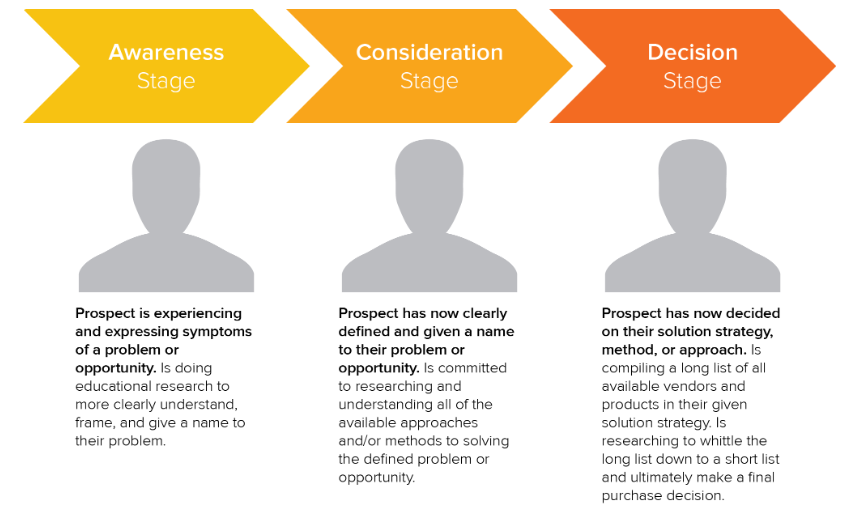
What are your target audience's challenges and pain points in the three different phases of the journey? The answers to this question will provide a robust foundation for your content strategy.
What are the words and phrases you should incorporate into your text to make sure people find your website (and potentially become your customers)? That's where SEO steps in.
Start by brainstorming key terms people would use to search for your product or service (in the 3 different stages of the buyer's journey) and take a look at their search volume. At Itag Media, we use advanced SEO tools to ensure we select the best keywords for a content strategy for a website.
But if you’re just getting started, take a look at available free tools online. You don't need super expensive software to find out how many people are looking for what you have to offer. Google Trends, for example, can help you identify overall interest on a specific product or service per country.
For example, let’s say you are a hairdresser. Google Trends can help you look into which hair products or treatments are popular in your country over the last months, as per the example below.
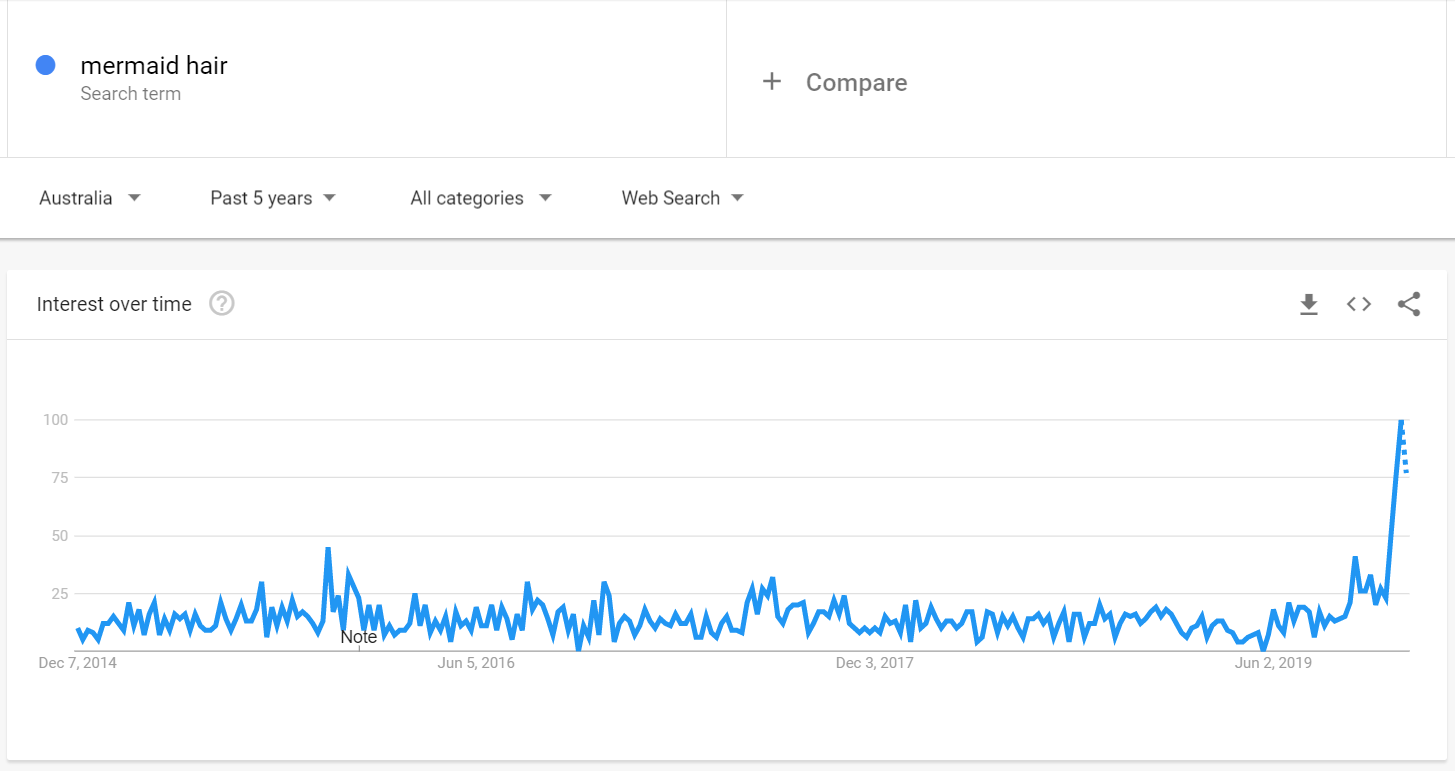
Mermaid hair is a hair colour trend that became quite popular over the last years in Australia. If your business provides this service, it would be a good idea including this keyword on the services section of your website.
Keyword research is important because it shows market demand and also the way people search for products and services. For example, if you work at a Real Estate agency, you should consider variations of keywords related to property and the search volume of all these variations.
Keyword research is certainly a bit more complex than this though, as you have to consider multiple other factors to have a complete view of the picture. The next step would be to strategically position your keywords not only throughout your website content but also in the source code of your website. We can't stress the word strategic here enough, as you don't want to go repeating keywords on all your pages. Think more about theming your pages with set keywords so that that have focus and authority on your website. If you need a hand with your keyword research and overall SEO strategy, let us know.
Now is the time to roll up the sleeves and start producing the website content. As part of your website content strategy, you need to find the type of content format which is the best for your audience. Generally speaking, you can work with written content, video, or visuals. Let’s talk about each one of them:
Copywriting is an extremely important marketing tool and, when done right, helps to ensure your brand message is communicated professionally. However, writing for a website is completely different than writing an academic paper, or a magazine article.
Here are a few quick tips for writing copy for your website:
Generally speaking, written content helps you communicate your message exactly as you want it. It’s also more descriptive and enables you to “have a conversation” with your reader. The downside of this type of content is that, when not done right, it can become boring. Here’s an example of a company that chose written content to communicate their service features:
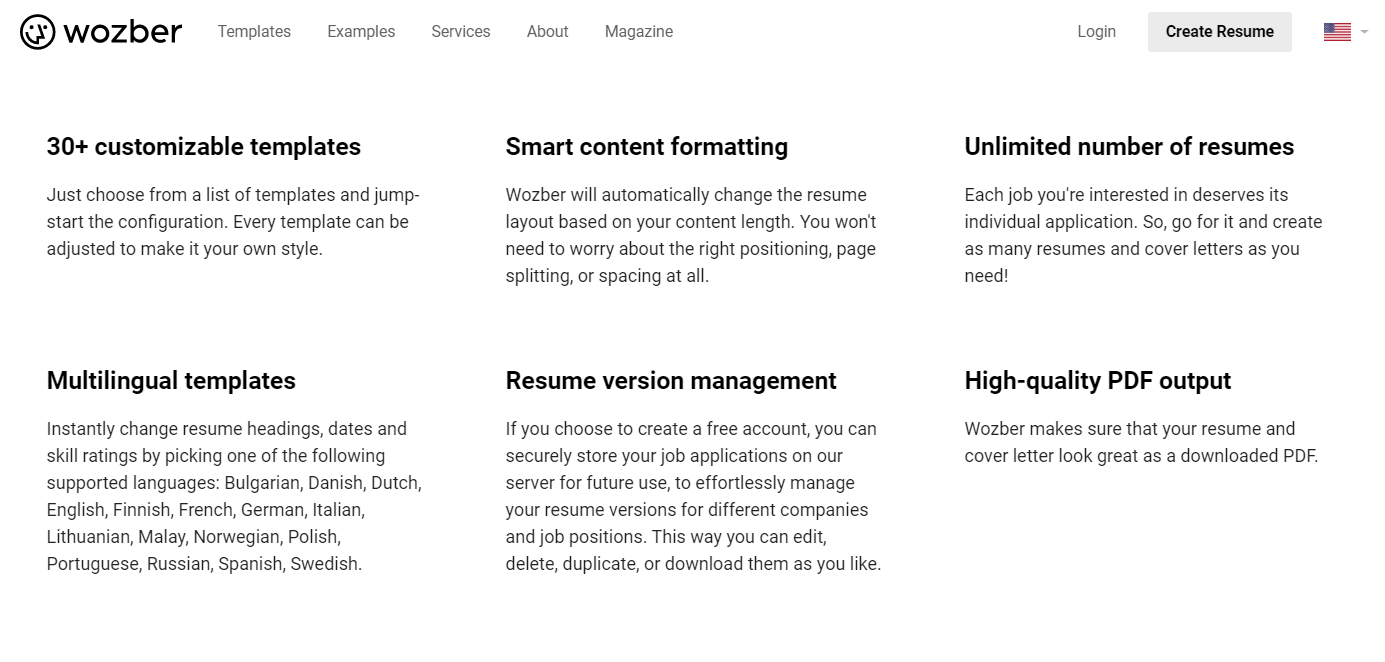
Wozber is an online resume builder. They also make use of visuals on their website, but when it comes to the product features, website copy was their go-to format to communicate their message more clearly.
Before we start, we need to say one important thing: It’s ok to use good stock photos. Nowadays multiple websites offer high quality (and free) images for commercial purposes. Pexels and Unsplash are a few of them. If you think you can communicate your message through images, make sure you choose photos that add real value to the content. Everything plays an important role on your website. Don’t choose images just to “fill in the white space” and if you can get your own professional photos, then this will always trump stock photography.
Visual content is the right format to use whenever you want to communicate a complex idea or service. Generally speaking, people tend to be attracted to images much more than text. Social media posts that include images produce 650% higher engagement than text-only posts, according to HubSpot. Let's look at one example:
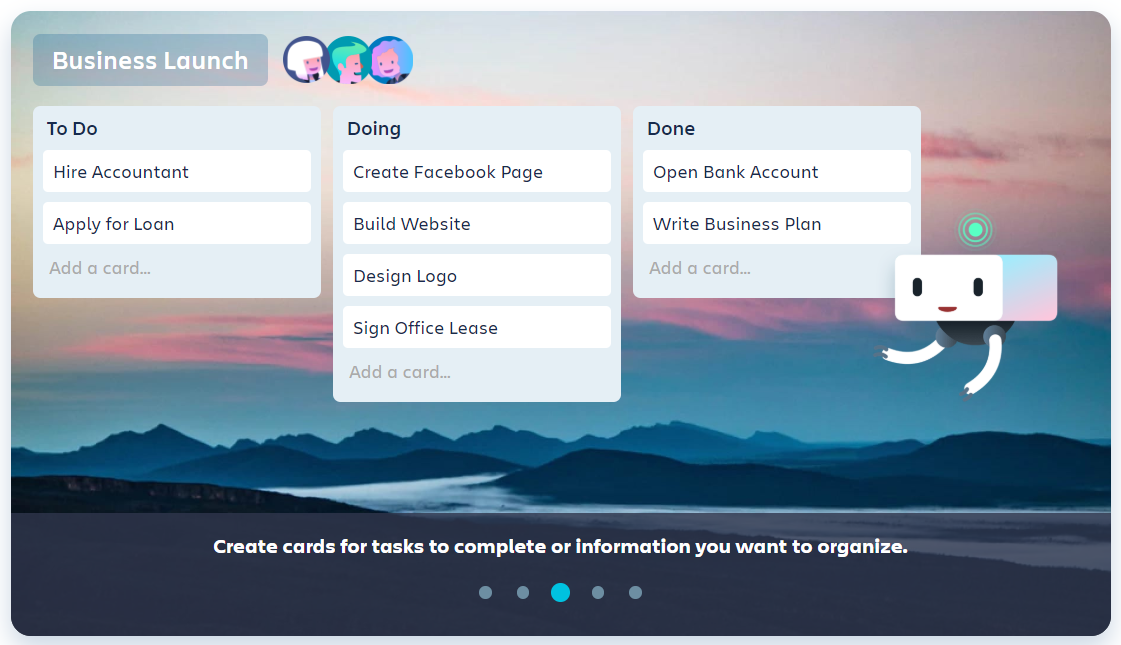
The project management software company Trello uses an image gallery to showcase product features. Just as an exercise, try to imagine the message above explained in written form. Challenging, isn’t it?
You can find the image above on their homepage, it's just a simple screenshot of the software but it says it all. The visuals help you clearly understand how the platform works - a great solution for SaaS companies.
Bottom line: Visuals are memorable and effective because they help people process, understand, and retain more information.
According to HubSpot data, people are 85% more likely to buy a product after viewing a product video. And it’s not only people who love video - search engines do too. You’re 53 times more likely show up first on Google if you have a video embedded on your website.
Videos are a powerful tool for getting your customer's attention as it's extremely easy to consume them. Today’s life is too busy and nobody has time to read long product descriptions or dig deep into services pages. The modern customer wants to see the product in action in a clear way. This preference towards video is one of the biggest driving forces of why you should be using video in your content marketing.
Using video also helps you increase the chances of having your content shared on social media. It's the perfect choice for educating and engaging directly with your customer. Airbnb's website has embedded videos with the goal of inspiring travellers and showcasing their latest product - Airbnb Experiences.
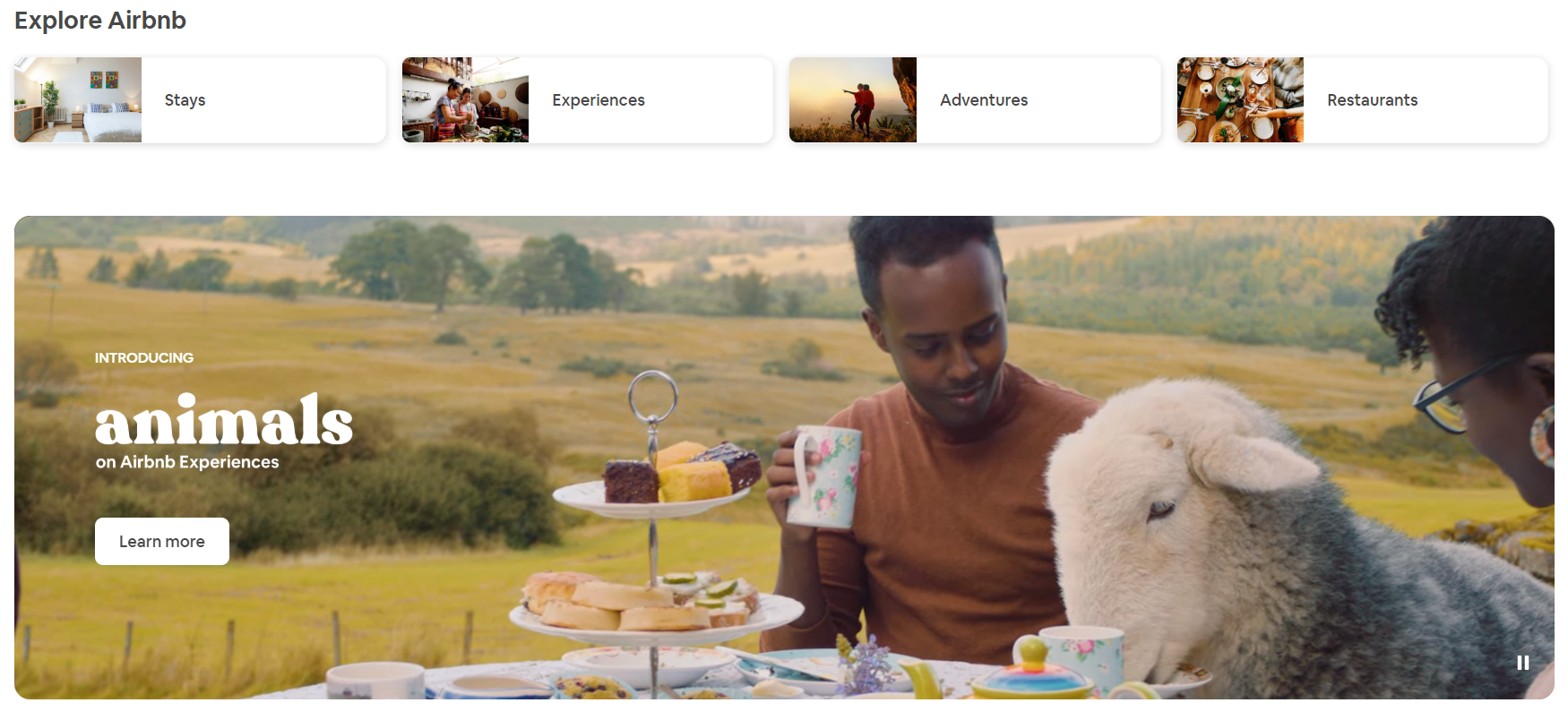 Conclusion
Conclusion The ideal scenario would be to include a little bit of each type of content discussed on your website. For example, you can use text for the About us page on your website, videos for your product descriptions and images for your services page. Your homepage should ideally include all three formats to help keep content interesting and attention-grabbing.
Now that you know who your target audience is and what's the best way to address them, you can move on with the content production and creation of your website. If you need assistance creating an effective website content strategy or a killer website design that will convert leads into customers, send us a message to schedule a chat in with our team. It's the perfect opportunity to talk about your business goals, challenges and hear from our experts on how we can help make your online presence more profitable.
© 2025 Itag Media | Legals | Privacy Policy | Site Map
your brand. made better